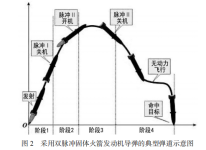Well, I mean the average power of the radar, not the peak power, which is commonly used in war. At the same time, the PESA system of N011M determines that its noise is very high. There is public information, antenna gain 36db, first sidelobe -25db, average sidelobe -48db. In comparison, the APG63 radar with a more backward system has a gain of 37db, and the first sidelobe level is less than -27db, which is better than N011M in all aspects.
Average power is peak power that reduces over time.
And which APG-63? The AESAs are way ahead, the MS radar is way behind. Even the Americans admitted to that in 2004 when they brought the F-15C to India. They had to argue that their AESA radar is better.
According to the radar range formula, when all other conditions remain unchanged, the radar range is proportional to the fourth root of the radar transmission power. It can be calculated that the detection range of N011M for a target of 3 square meters is about 120 kilometers, which is consistent with the 110KM figure given by India's HAL.
Yes. So against a Flanker-sized target, 15 square meters, it is 180 km. Tracking range is just a general "100+" km, it's not the actual figure. We can assume a Flanker will be tracked at 140-160 km.
Well, many satellite photos of Tibet show that the J-10 appears frequently. Similarly, if it is facing the J-11B, the better PD radar and the worse PESA can still be compared equally, but in front of the J-16/J-11BG, the Su-30 faces an absolute disadvantage.
If the J-11BG and J-16 are equipped with digital radars, then it's possible. If the radars are analog, like pretty much all of the USAF fighters today, then it's less of a problem. The reason being a hybrid PESA like N011M acts like an analog AESA when it's performing one function at a time. A regular PESA has one or two centralized receivers, but N011M has 1700+ receivers, so the received signal is processed like it's done in any analog AESA radar.




